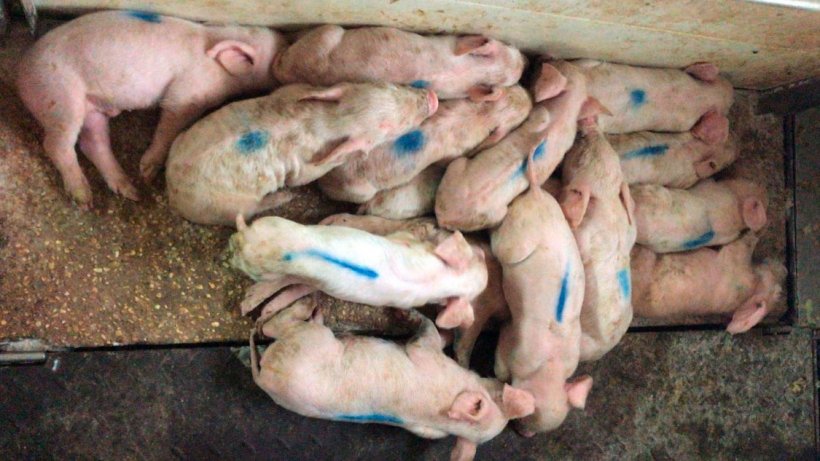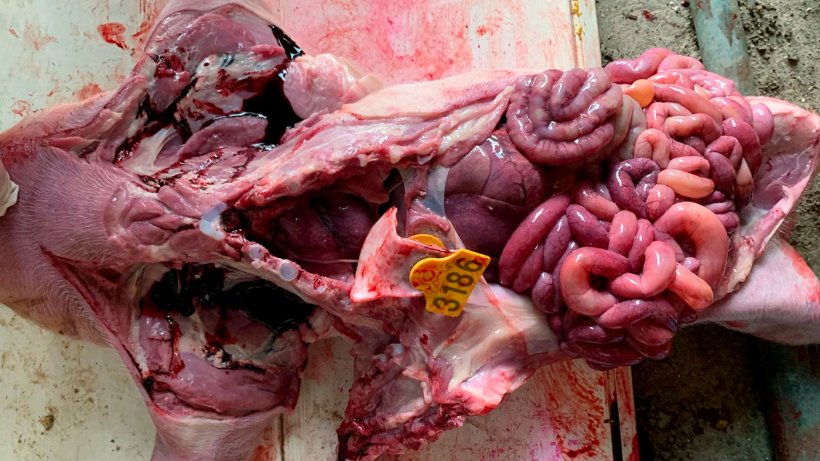This article will address the most common incidence and agents. The coming articles will follow up with preventive strategies, with vaccination guidelines, cleaning and disinfection; the preventive methods approach with feed-back and biosecurity; the influence of peri-farrowing sow nutrition on this pathology; and we will finish with the treatments to be implemented if there is an outbreak.
How frequently does diarrhea occur in neonatal piglets?

The four professionals believe that this pathology we have to face today is very important.
Regarding the incidence, Ackerman, Cantín, Guedes and Vraeghe agree that this pathology has a high incidence on farms, which has increased in recent years.
Cantín specifies that neonatal diarrhea presents with greater incidence from day 2 of lactation until days 6-7, and can affect 80-90% of the farm. It mainly occurs in gilts, with more than 50% incidence, but also occurs in multiparous sows with 30-35% incidence, affecting mainly second and sixth parity sows. It is usually found with watery diarrhea and very stained and dehydrated piglets piled up on the heating pad as seen in photo 1, or even piled on the sow.

Photo 1. Three-day-old piglets are seen with yellow, liquid diarrhea; they are very stained and damp. The pigs feel cold and are piling up on the heating pad.
Both Cantín and Vraeghe attribute a higher percentage of cases to gilts.
A multifactorial cause
The four professionals stress the multifactorial nature of diarrhea and the importance of making a proper diagnosis, differentiating between diarrhea that may be related to the environment, management, or nutrition and diarrhea caused by infectious agents.
Vraeghe explains in a very descriptive way the idea of the balance between infection pressure and the preventive measures of management, immunization, hygiene, etc. There are farms where diarrhea has been under control for a long time and then, without any apparent changes, the diarrhea comes back. This happens because this balance has been upset. In the same way, there are farms with few measures in place that manage to avoid diarrhea, and on other farms this is much more difficult, even with many measures implemented. That's because this balance between infection pressure, immunity, genetics, feeding, environment, etc. is unique to each farm.
What are the most frequently diagnosed agents for this pathology?
Regarding the most common agents, Guedes stresses that the main challenge is diagnosing the etiological agent since it is very common to find mixed infections on the farm with at least two agents involved. He points out that it is very important to remember to use histopathology techniques that allow us to determine the type of lesion caused and thus determine the primary agent. This technique is not specific, but it is very sensitive and can lead us to the diagnosis of the main problem, or even to find lesions and directly fight against the agent that causes them. Focusing only on the agents we find and not on the lesions that occur can lead to errors.
We did see more differences between the professionals' responses, when we asked them what the main causative agents of diarrhea are according to their experience.
Guedes puts Clostridium difficile first in the list of principal causative agents. He explains: Diagnoses of C. difficile has greatly increased in recent years, both in field diagnostics based on symptoms and necropsy and in laboratory diagnostics.
Rotavirus is second on the list, due to an increase in the number of Rotavirus type C diagnoses. Cases of Rotavirus A are less frequent. The third on the list is Echerichia coli. He points out that coccidiosis should not be forgotten, which is a frequent problem on farms in Brazil, although it is not exactly "neonatal" diarrhea, rather it is seen in older piglets.

He tells us Clostridium Perfringens type A is not diagnosed in Brazil since it is not clear how to diagnose it, so they think of it when they test for everything and find nothing.
Cantín emphasizes that there is usually not a single agent involved. Rotavirus is almost always there, he says, but in many cases controlling the rotavirus is not enough to solve the problem. There is usually a second agent, which is sometimes E. coli (usually beta-hemolytic), and in other cases is Clostridium.

Photo 2: Digestive tract of a nursing piglet in which a large congestion in the small intestine and yellow liquid contents can be observed. This was a case diagnosed with beta-hemolytic E.coli.
He also points out another important issue: on some farms that have had a clinical outbreak of porcine epidemic diarrhea, it has remained on the farm in its chronic form and can be found in piglets just a few days old.
Ackerman doesn't hesitate to name Rotavirus as the main agent, specifically A and C as the most common. In his opinion, Rotavirus B also causes problems, although he admits that other colleagues don't think it plays a significant role.
In second place he puts C. perfringens type A and C. difficile. Ackerman explains that the hemolytic toxin of C. perfringens type A, causes problems, although he admits that this issue generates discussion, and there isn't a unanimous opinion among veterinarians from different countries. However, the widespread use of commercial vaccines has meant there are virtually no problems caused by C. perfringens type C. Diarrhea caused by E. coli is also well controlled by vaccine prevention.
Of course TGE, PED, or delta-coronavirus can cause serious problems, but they occur in the form of epidemic outbreaks, not on an ongoing basis. Coccidiosis is also a problem that appears. He emphasizes that in a differential diagnosis in the USA, the flu and Seneca Valley virus should not be forgotten.
Vraeghe lists E.Coli and C. Perfringens type C first. He explains that C. Perfringens type A is often diagnosed today, but in his opinion it does not always play a pathogenic role. Cases of Rotavirus type A and C are also frequent.
In summary, neonatal diarrhea is an old problem that seems to continue today, with a complex etiology and a difficult diagnosis and prognosis.
In the following article we will discuss preventive strategies that could help control it.






